The Desert Rose (Adenium obesum) is a captivating succulent plant that thrives in arid and semi-arid regions, displaying a remarkable ability to survive and bloom in harsh desert conditions. With its striking flowers and unique swollen trunk, the Desert Rose has become a beloved ornamental plant in gardens, landscapes, and indoor settings around the world. In this article, we will delve into the fascinating world of the Desert Rose, exploring its characteristics, care requirements, and the enchanting allure it brings to the arid landscapes it calls home.
Desert Rose images
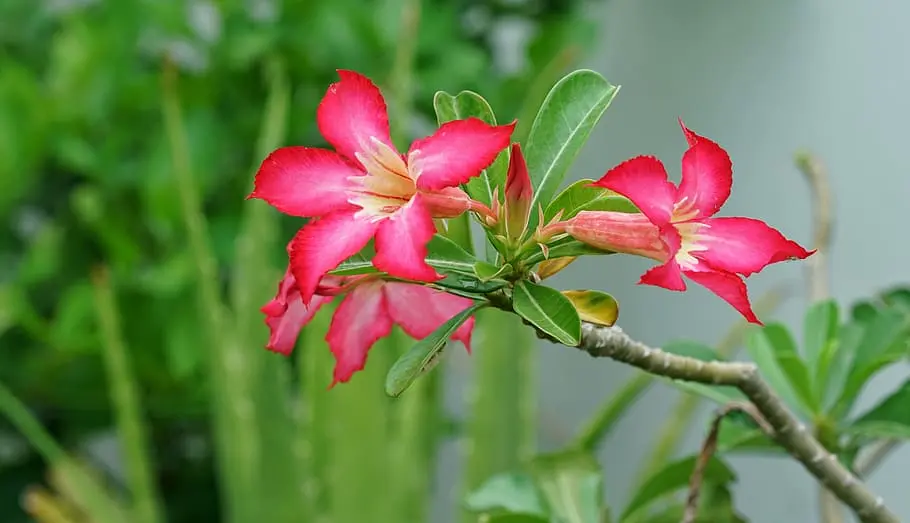


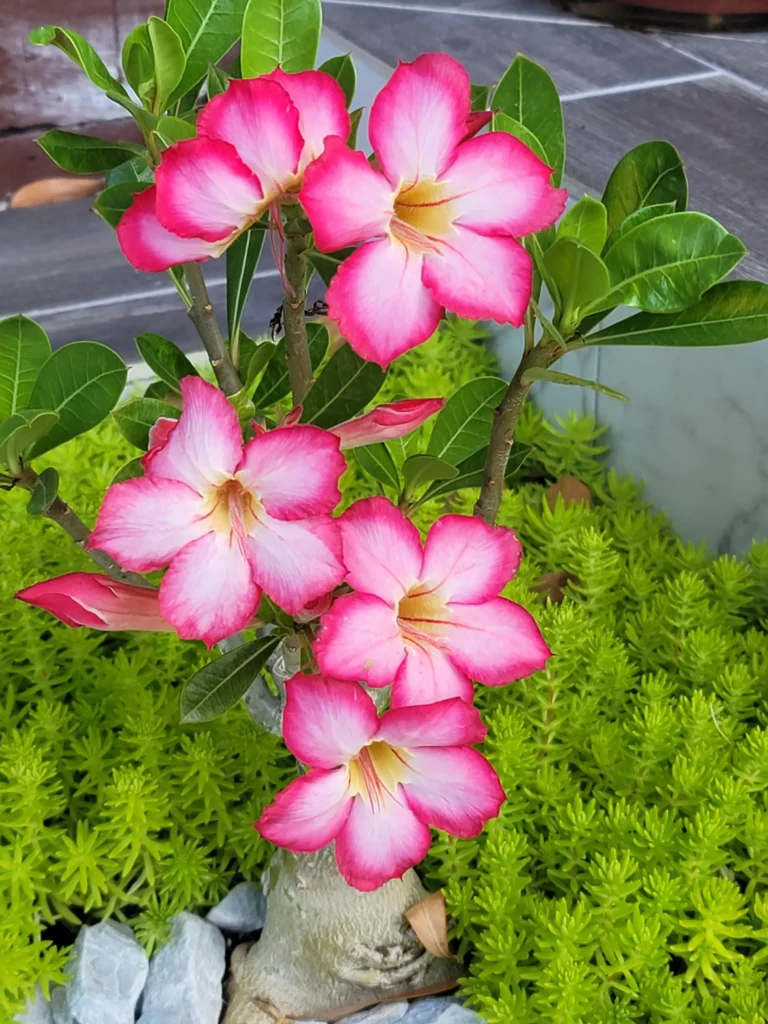
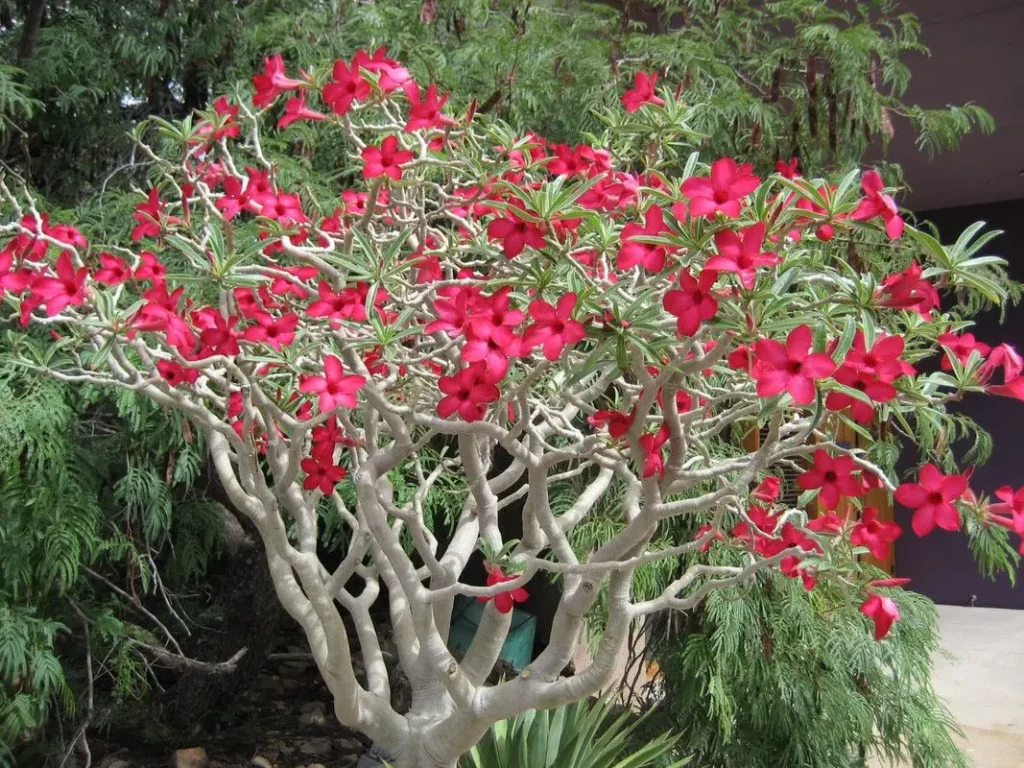
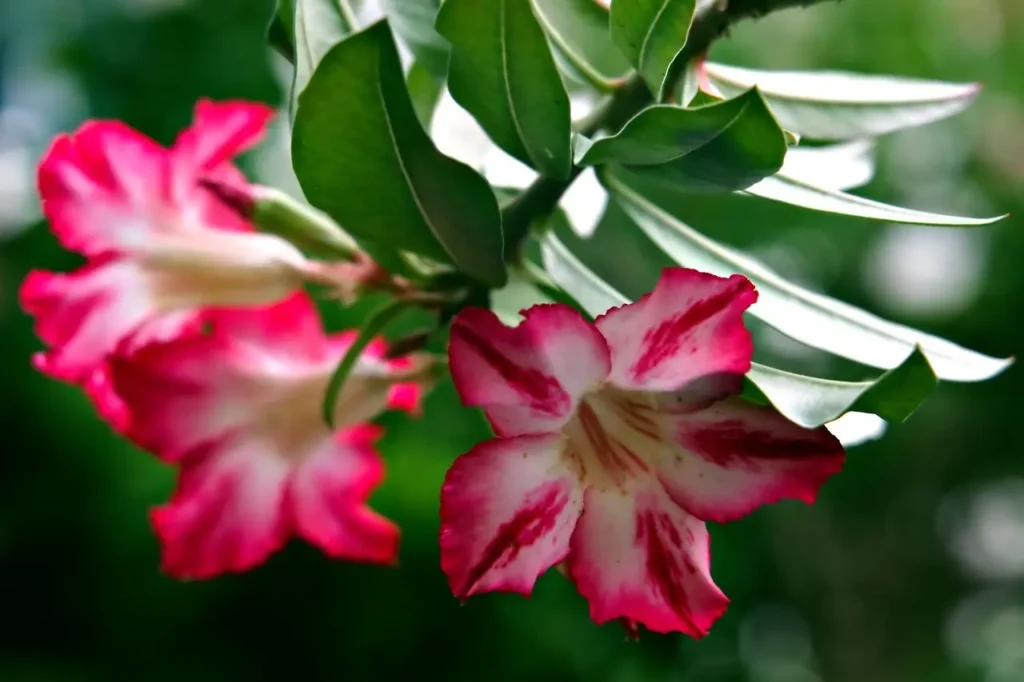

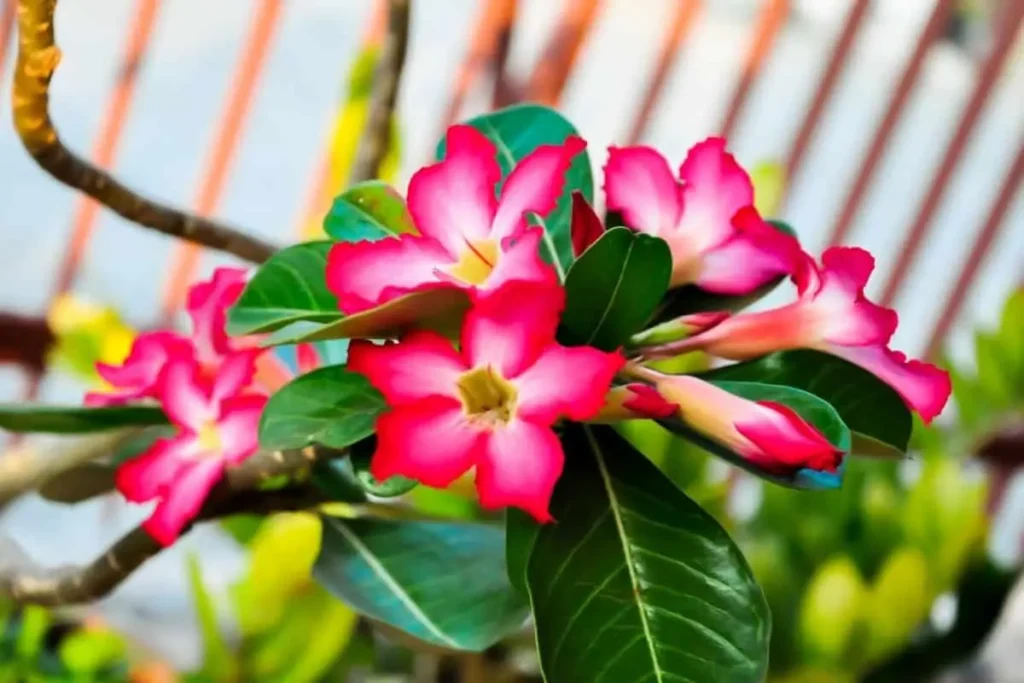

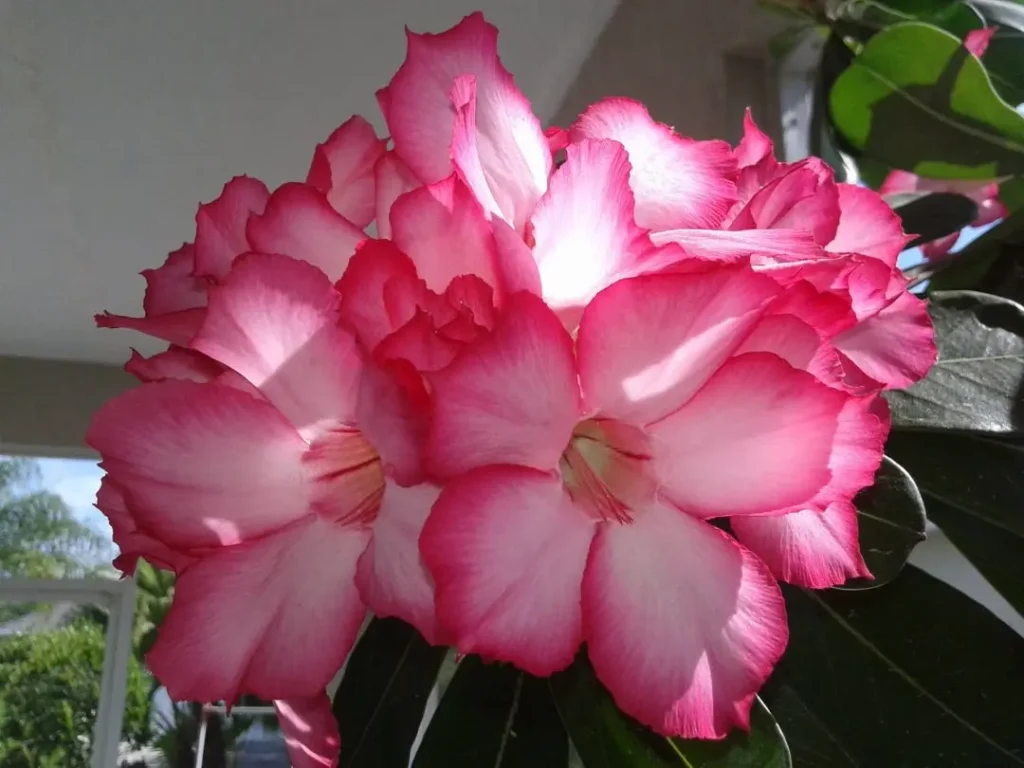

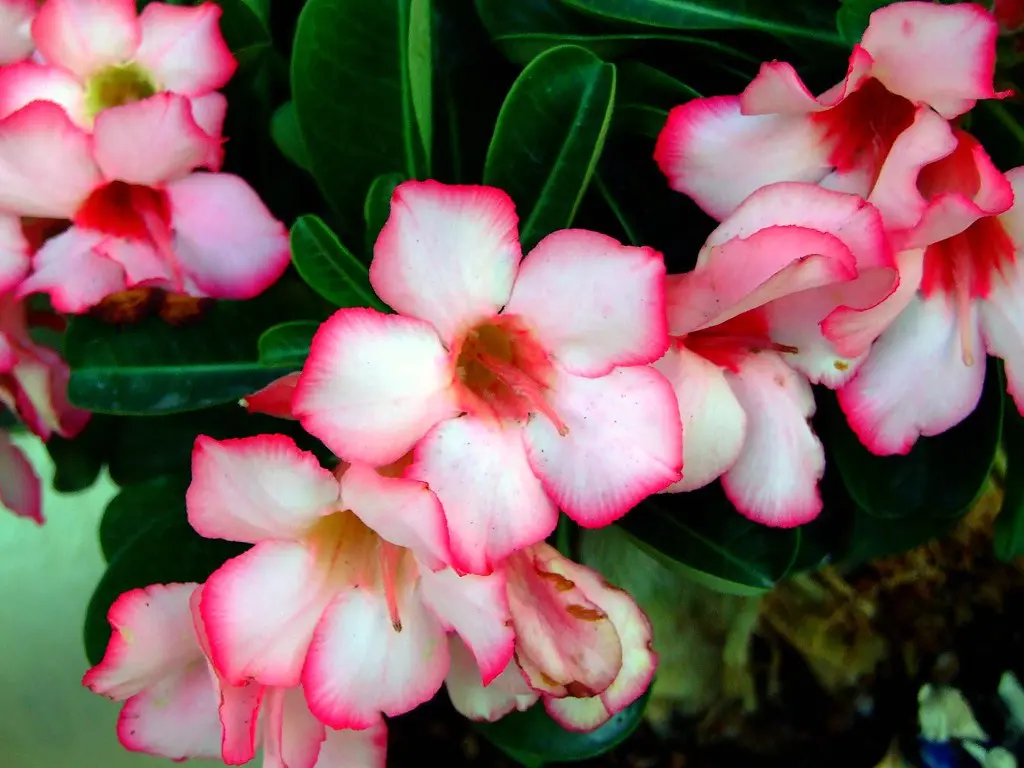
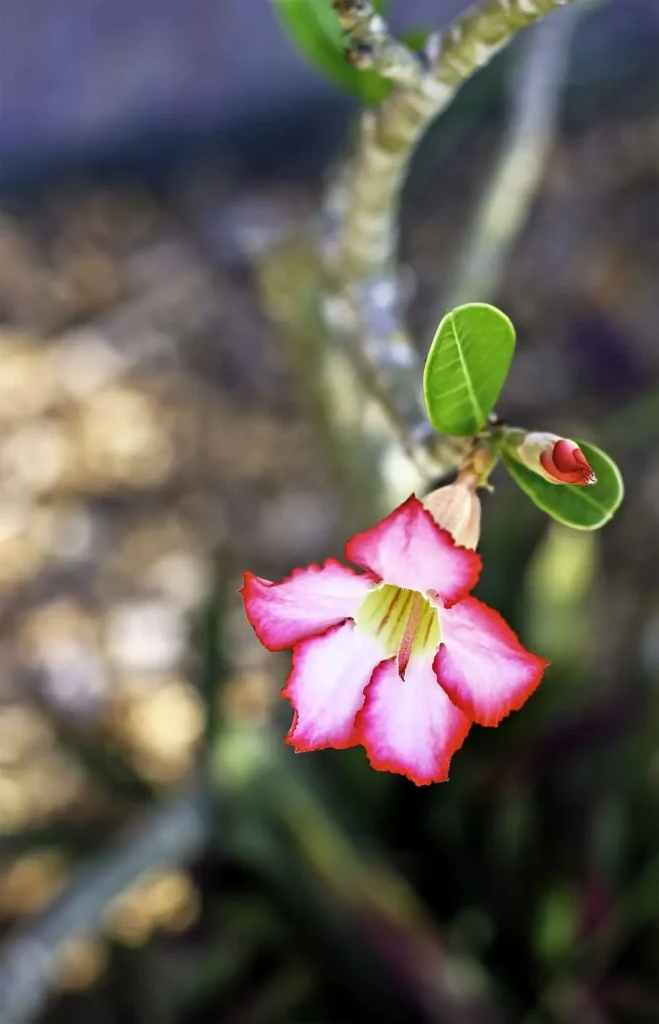

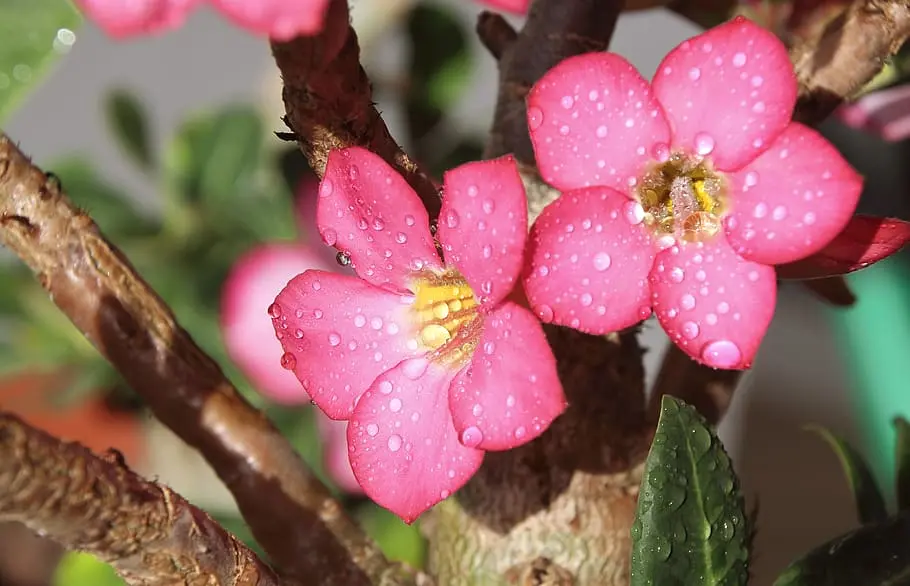
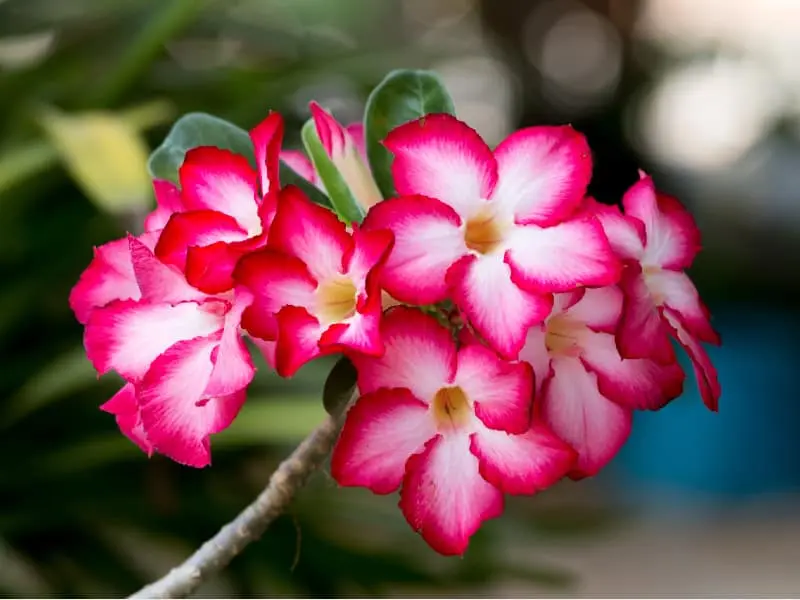
Origins and Natural Habitat
Native to the arid regions of Africa, particularly the Sahel region, the Arabian Peninsula, and parts of India, the Desert Rose has adapted to survive in dry, hot climates. It is commonly found growing in rocky or sandy soils, often among other desert plants such as cacti and succulents. Its ability to endure high temperatures, low humidity, and limited water availability makes it a remarkable example of nature’s resilience.
Distinctive Features
The Desert Rose is known for its unique appearance, characterized by a swollen, bulbous trunk, which stores water during dry periods. This caudex gives the plant a distinctive and aesthetically appealing shape. From the swollen base, multiple branches emerge, displaying leathery, lance-shaped leaves that cluster at the ends.
One of the most captivating aspects of the Desert Rose is its flowers. Blooming in a wide range of colors, including shades of pink, red, white, and purple, the flowers are often large and showy, with a characteristic tubular shape and overlapping petals. The blooms attract pollinators such as butterflies and bees, enhancing the plant’s ecological value.
Cultural Significance and Symbolism
The Desert Rose holds cultural significance in various regions. In some African cultures, it is believed to bring good luck, protection against evil spirits, and prosperity. The plant’s ability to thrive in challenging conditions is seen as a symbol of endurance, strength, and resilience.
Gardening and Care
Growing a Desert Rose requires specific care and attention to replicate its native environment. Here are some key considerations:
- Sunlight: Desert Roses thrive in full sun, requiring at least 6 hours of direct sunlight daily. Place them in a location with ample sunlight, such as a sunny window or a spot in the garden that receives uninterrupted sunlight.
- Temperature: These plants prefer warm temperatures, ideally between 70-90°F (21-32°C) during the day. Protect them from frost and provide adequate warmth in cooler months.
- Soil: Use a well-draining soil mix specifically designed for succulents or cacti. A mix containing sand, perlite, and organic matter will provide the necessary drainage to prevent root rot.
- Watering: Desert Roses are drought-tolerant, so it’s crucial not to overwater them. Allow the soil to dry out between waterings, and then water thoroughly, ensuring excess water drains away. During winter months, reduce watering to mimic the plant’s natural dormancy period.
- Pruning: Prune the Desert Rose selectively to maintain its desired shape and encourage branching. Remove dead or damaged branches and trim back excessive growth if necessary.
- Pests and Diseases: Keep an eye out for common pests like aphids, mealybugs, and spider mites. Treat infestations promptly with organic insecticides or insecticidal soaps. Ensure proper airflow around the plant to prevent fungal diseases.
Indoor and Container Gardening
Desert Roses can also thrive indoors if provided with the right conditions. Choose a well-draining potting mix and place the plant in a bright location near a window with direct sunlight. Rotate the plant occasionally to ensure even growth.
The Desert Rose, with its remarkable ability to thrive in arid conditions, brings a touch of exotic beauty and resilience to gardens and indoor spaces. Its swollen trunk, striking flowers, and ability to withstand harsh environments make it a captivating addition to any landscape or plant collection. By understanding its specific care requirements and appreciating its unique adaptations, we can enjoy the charm and elegance of this resilient desert gem.